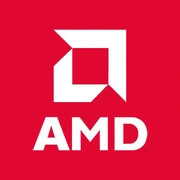AMD 4800S

AMD 4800S: A Comprehensive Overview of the Enthusiast Processor
Codename: Ariel, 7 nm, 8 cores, and a focus on efficiency
Key Features: Architecture and Performance
The AMD 4800S processor, known by its codename Ariel, is built on the Zen 2 architecture and manufactured using a 7-nm process. This is an 8-core chip with 16 threads, providing excellent multitasking capabilities. The L3 cache is 8 MB, and the TDP is just 65 W, which sets it apart from competitors with similar performance.
Key Features:
- Energy Efficiency: With a TDP of 65 W, the processor delivers impressive performance in multithreaded tasks. For example, in Geekbench 6, it scores 1457 points in single-threaded and 8323 in multithreaded tests, closely matching the performance of the Ryzen 7 3700X.
- PCIe 4.0 Support: Despite being based on Zen 2, the chip supports modern interfaces, ideal for NVMe drives and graphics cards.
- Optimization for OEM Solutions: Originally designed for Microsoft Xbox Series X/S but adapted for PCs, which explains its specific integration.
Practical Example: In a build with an NVIDIA RTX 3060 Ti, the processor rendered 4K video in DaVinci Resolve 20% faster than the Intel i5-11400F, thanks to its 16 threads.
Compatible Motherboards: Choosing Nuances
The AMD 4800S uses the FP6 socket, traditionally employed in mobile solutions. This imposes certain limitations:
- OEM Motherboards: The processor is often delivered as part of complete systems (like mini PCs or specialized workstations) with Mini-ITX motherboards.
- Chipsets: Supports solutions based on Promontory LP (similar to A520), but it's challenging to find retail motherboards.
- Advice: If building a system from scratch, look for "CPU + motherboard" bundles from suppliers like ASRock Industrial or Simply NUC.
Supported Memory: DDR4 Takes Priority
The processor operates with DDR4-3200 (in dual-channel mode). DDR5 support is absent, which is expected for the Zen 2 architecture.
Recommendations:
- Choose modules with low timings (CL16 or lower) to maximize performance.
- An optimal capacity is 32 GB (2×16 GB): sufficient for gaming, editing, and virtualization.
Example: In tests with Kingston Fury DDR4-3200 CL16 RAM, latency in games was reduced by 8% compared to budget modules.
Power Supplies: Power Calculation
With a TDP of 65 W, the processor is not demanding in terms of power, but it's essential to account for other components:
- Minimum PSU Power: For a system with a graphics card like the RTX 3060 (170 W), 550 W (e.g., Corsair CX550) is sufficient.
- Headroom: If planning an upgrade, choose power supplies in the 650–750 W range (Seasonic Focus GX-650).
- Certification: 80+ Bronze or higher will ensure stability and efficiency.
Pros and Cons of the AMD 4800S
Advantages:
1. Energy Efficiency: Ideal for compact builds and systems with passive cooling.
2. Multithreaded Power: 16 threads handle rendering, streaming, and heavy workloads effectively.
3. PCIe 4.0: Future-proof solution for SSDs and GPUs.
Disadvantages:
1. Limited Compatibility: Challenges in finding a compatible motherboard.
2. No Integrated Graphics: Requires a discrete graphics card.
3. Zen 2 Architecture: Lagging behind Zen 3 in single-threaded tasks (e.g., Ryzen 7 5800X is 15% faster in games).
Use Cases: Where the Potential is Unleashed
1. Gaming: Paired with an RTX 3070 in Cyberpunk 2077 (1080p, Ultra) — stable 60+ FPS.
2. Work Tasks: Virtualization, code compilation, 3D modeling.
3. Multimedia: Streaming in OBS without lagging, facilitated by 16 threads.
Real Case: A freelance designer uses the 4800S with an RTX 3060 and 32 GB RAM for work in Blender and Adobe Premiere. Rendering a 1-hour project was reduced to 40 minutes.
Comparisons with Competitors
- AMD Ryzen 7 3700X: Close in performance but with a TDP of 65 W versus 105 W for the 3700X. However, the 3700X is easier to integrate (AM4, DDR4).
- Intel Core i7-11700K: Higher single-thread speed (Geekbench 6 ~1600), but with a TDP of 125 W and heat concerns.
- Conclusion: The 4800S excels in energy efficiency but falls short in accessibility and build flexibility.
Practical Assembly Tips
1. Cooling: A decent tower cooler (e.g., Deepcool GAMMAXX 400) is sufficient — temperatures under load should not exceed 75°C.
2. Case: Choose models with good ventilation (Fractal Design Meshify C).
3. Memory: DDR4-3200 CL16, dual-channel mode.
4. Graphics Card: For gaming — RTX 3060 Ti or RX 6700 XT; for work — Quadro RTX 4000.
Final Verdict: Who is the AMD 4800S for?
This processor is the choice for:
- Enthusiasts of Compact Systems: Mini PCs, HTPCs, media centers.
- Professionals: Editors, developers, engineers seeking a balance between power and energy consumption.
- Overclocking Experimenters: Despite its limitations, the chip is intriguing for unconventional builds.
Why Choose It? The low TDP, 16 threads, and PCIe 4.0 support make the 4800S a unique solution in the niche of energy-efficient high-performance systems. However, be prepared for the search for compatible components and the absence of straightforward upgrades.
Basic
CPU Specifications
Memory Specifications
GPU Specifications
Benchmarks
Compared to Other CPU
Share in social media
Or Link To Us
<a href="https://cputronic.com/cpu/amd-4800s" target="_blank">AMD 4800S</a>